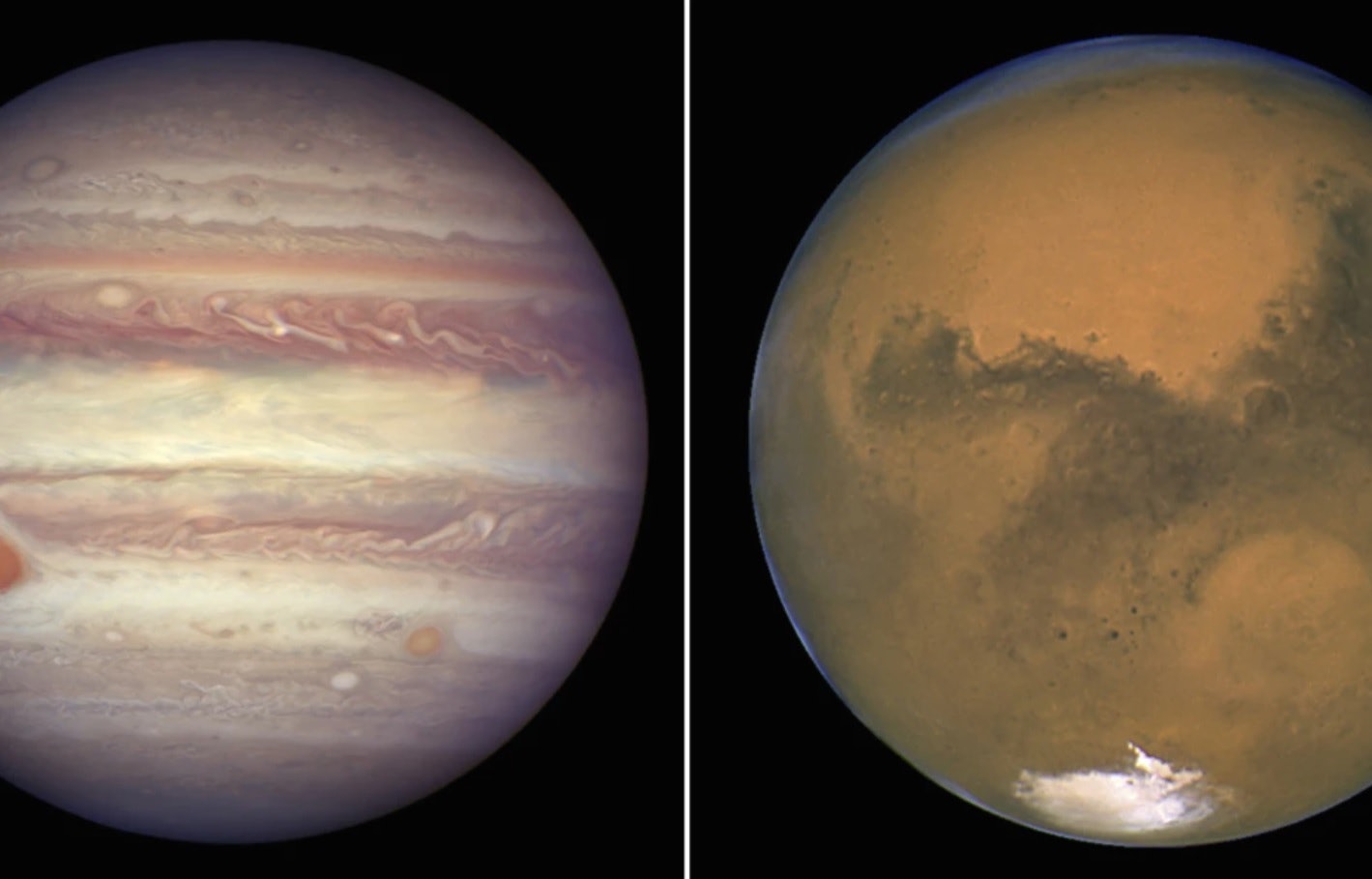
The Perseid meteors are a tough act to follow, but Mars and Jupiter are taking the stage for a closing act this week. The two planets will appear side-by-side in the eastern sky in the hours just before dawn on Wednesday morning, in a planetary conjunction that only happens every few years.

Conjunction Junction, Space Edition
This week, Earth, Mars, and Jupiter all happen to be at just the right places in their paths around the Sun, so that you could almost draw a straight line from Earth, 150 million miles across space to Mars, and 350 million more miles across space to Jupiter. The result, for viewers standing on Earth’s surface, is that Mars and Jupiter look very close to each other in the sky, especially in the predawn hours of Wednesday morning. You should be able to see both planets with the unaided eye, but binoculars or a small telescope will give you an even better view.
Look low in the eastern sky a few hours before sunrise; Mars should show up as a bright reddish dot of light, while Jupiter will be a bigger, brighter white dot of light. Over the next few days, Jupiter should rise higher in the sky, so that it will appear a little above Mars in the night sky. A stargazing app, like Stellarium, can help you locate the planets more precisely.
And although the annual Perseid meteor shower has already peaked, it’s not over yet, so you may still be able to spot a few meteors streaking across the blackness, 50 miles above your head — far away, but exponentially closer than Mars and Jupiter.
If you were in orbit around Jupiter right now, you might be able to spot Mars and Earth in a similar conjunction. But from Mars, you’d see Earth and Jupiter on opposite sides of the Martian night sky.







